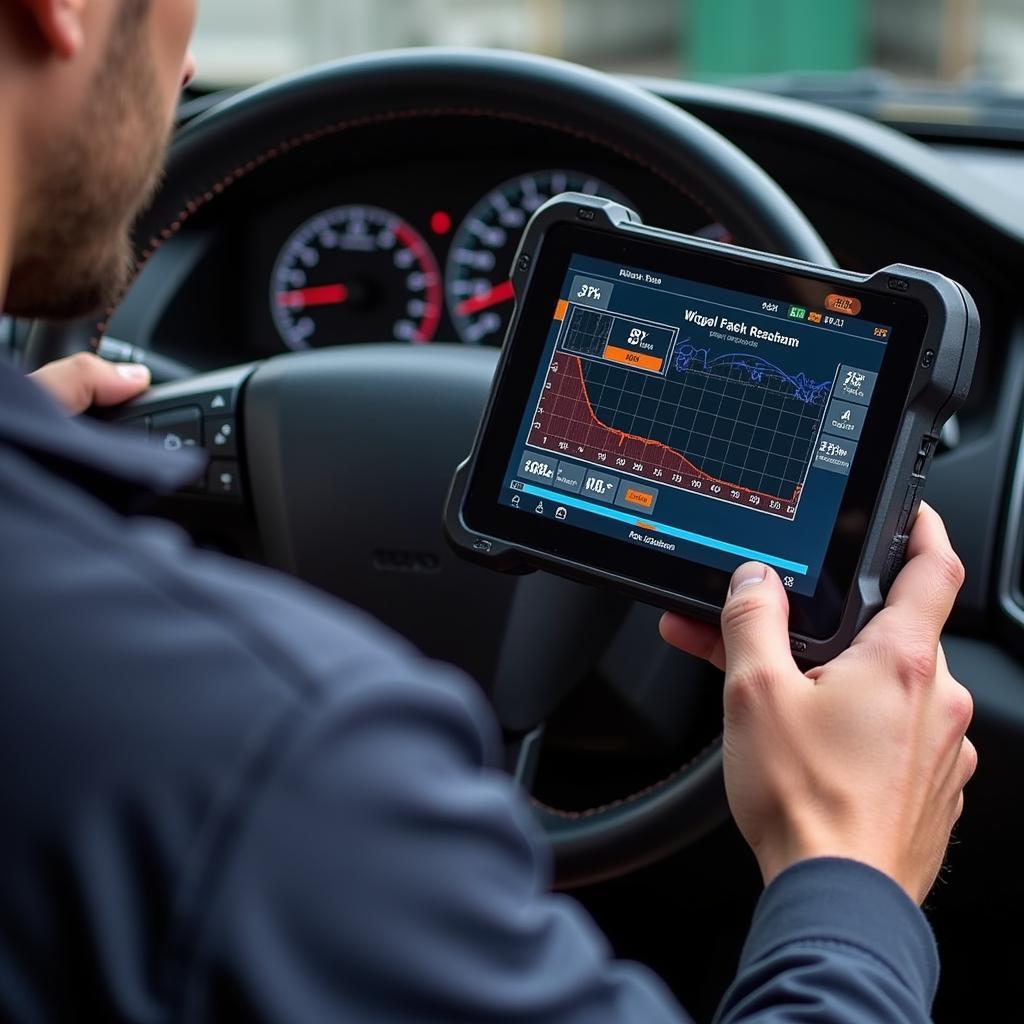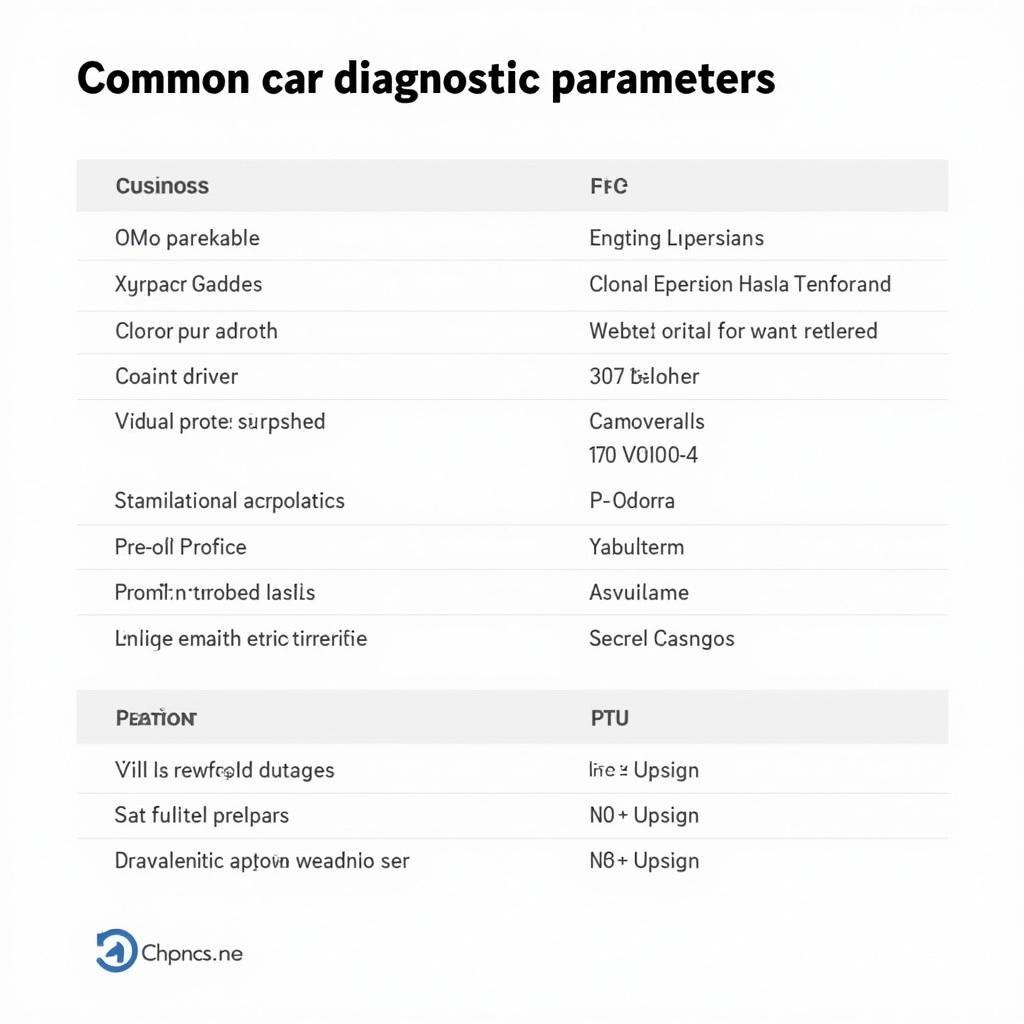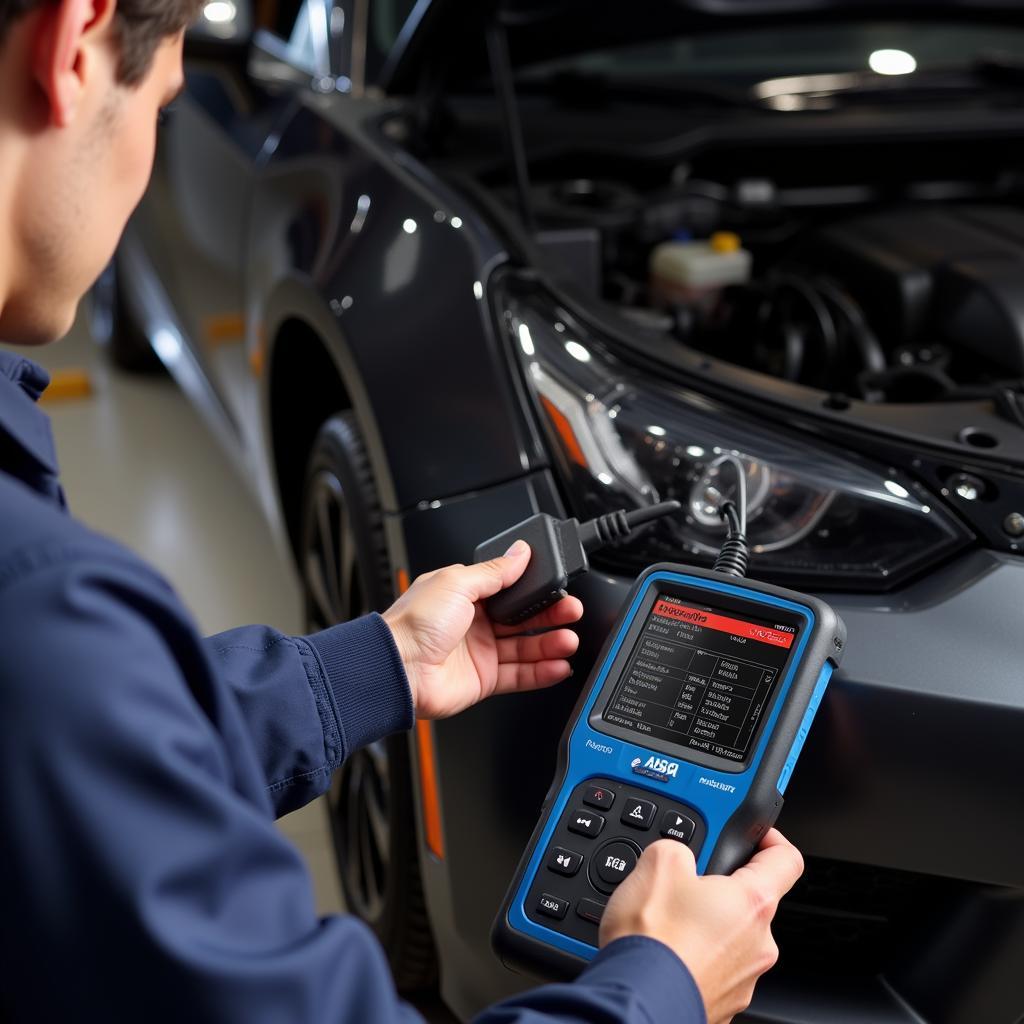Live data, accessible through a scan tool, offers a real-time look into your car’s nervous system – its computer network. This data stream, presented as numbers, graphs, or even waveforms, reveals the inner workings of your vehicle’s various systems, providing invaluable insight for diagnosing and resolving car issues. But for many, understanding this stream of information can feel like deciphering a foreign language.
This guide demystifies scan tool live data, equipping you with the knowledge to interpret these readings effectively. Whether you’re a seasoned mechanic or a car enthusiast keen on DIY repairs, this guide will empower you to tackle automotive issues with greater confidence.
What is Scan Tool Live Data?
Imagine your car’s computer system as a bustling network, constantly sending and receiving messages from various sensors located throughout the vehicle. These sensors monitor everything from engine speed and temperature to oxygen levels and tire pressure.
A diagnostic scan tool for all cars 2017 – under 250$ acts as your window into this network. It taps into the data stream, presenting it in a readable format on its display. This real-time information is what we refer to as “live data.”
Instead of static codes that only hint at potential problems, live data shows you exactly what’s happening at that very moment. It’s like having a stethoscope for your car, allowing you to hear its heartbeat and diagnose irregularities.
Why is Live Data Important?
Live data is more than just a stream of numbers; it’s the key to accurate and efficient vehicle diagnostics. Here’s why it’s so crucial:
- Accurate Diagnosis: Live data pinpoints the root cause of a problem instead of relying solely on error codes, which might only indicate symptoms.
- Real-Time Monitoring: Observe changes in sensor readings as you manipulate components or perform tests, facilitating quicker and more precise diagnoses.
- Proactive Maintenance: Spotting unusual readings before they escalate into major problems allows for timely maintenance and potentially prevents costly repairs down the line.
- Verification of Repairs: After a repair, live data confirms that all systems are functioning within the correct parameters, offering peace of mind.
 Live Data on a Scan Tool
Live Data on a Scan Tool
Understanding Common Live Data Parameters
While the specific parameters available vary depending on the scan tool and vehicle, certain types of data are universally crucial:
Engine Performance Data:
- RPM (Revolutions Per Minute): Indicates engine speed.
- MAF (Mass Air Flow): Measures the amount of air entering the engine.
- TPS (Throttle Position Sensor): Shows how far the gas pedal is depressed.
- Coolant Temperature: Monitors engine temperature to prevent overheating.
- O2 Sensor Readings: Measure oxygen levels in the exhaust, indicating combustion efficiency.
Transmission Data:
- Gear Position: Confirms the transmission is in the correct gear.
- Fluid Temperature: Indicates transmission fluid temperature.
- Shift Solenoid Status: Shows the position of solenoids that control gear changes.
ABS and Traction Control Data:
- Wheel Speed Sensors: Report the rotational speed of each wheel.
- Steering Angle Sensor: Monitors the position of the steering wheel.
- Brake Pedal Position: Indicates how far the brake pedal is depressed.
 Common Car Diagnostic Parameters
Common Car Diagnostic Parameters
Interpreting Live Data: Tips and Tricks
Analyzing live data effectively requires more than just reading numbers; it demands an understanding of how these values interact and what deviations from the norm signify.
Here are some valuable tips:
- Consult Manufacturer Specifications: Always refer to the manufacturer’s specified values for each parameter. This provides a baseline for comparison and helps you identify anomalies.
- Look for Patterns and Correlations: Don’t just focus on individual readings; observe how different parameters influence each other. For instance, a drop in fuel pressure coinciding with a misfire might point toward a fuel delivery issue.
- Utilize Graphing Features: Many scan tools offer graphing functions, which visually represent data changes over time, making it easier to identify trends and intermittent issues.
- Employ Active Testing: Manipulate systems while monitoring live data. For example, opening and closing the throttle while observing the TPS reading can reveal a faulty sensor.
- Record and Compare: Note down baseline readings and compare them to data collected after test drives or repairs.
Choosing the Right Scan Tool
With a plethora of scan tool options available, selecting the right one for your needs can be daunting. Consider these factors:
- Vehicle Compatibility: Ensure the scan tool supports the make, model, and year of your vehicle.
- Functionality: Determine the features you require. Basic code readers might suffice for home use, while professional mechanics need advanced scan tools with live data, bi-directional control, and special functions.
- User Interface: Opt for a scan tool with a user-friendly interface, clear navigation, and easy-to-understand displays.
- Budget: Scan tools range in price from affordable DIY options to high-end professional models. Define your budget and choose accordingly.
For a specific example, you can find more information on a volvo scan tool version 1.3 on our website.
 Choosing the Right Scan Tool
Choosing the Right Scan Tool
Conclusion
Understanding Scan Tool Live Data transforms your approach to car diagnostics. It empowers you with the knowledge to diagnose problems accurately, streamline repairs, and make informed decisions about your vehicle’s maintenance.
Remember, the ability to interpret live data is a skill honed over time. Continuous learning, combined with the tips and insights provided in this guide, will undoubtedly enhance your diagnostic capabilities.
Need further assistance with your automotive needs? Contact ScanToolUS today at +1 (641) 206-8880 or visit our office at 1615 S Laramie Ave, Cicero, IL 60804, USA. Our team of experts is ready to assist you.

